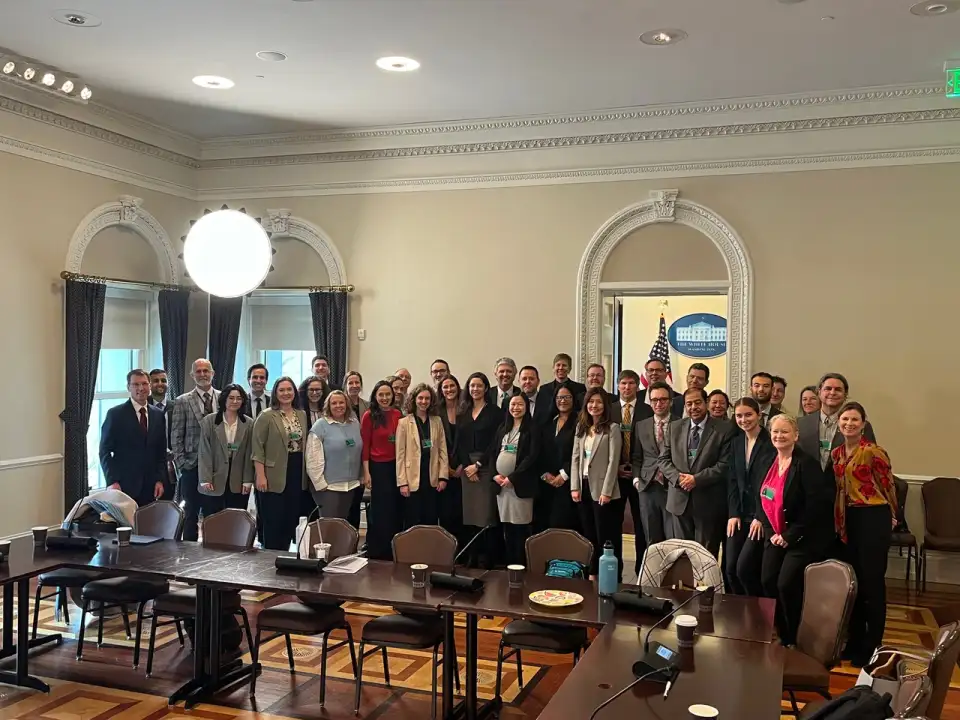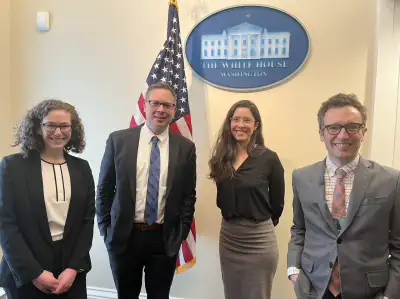On March 19th of 2024 the Biden-Harris administration, through its Climate Policy Office, convened the Embodied Carbon Roundtable with the goal of initiating discussions on Part 2 of the forthcoming National Definition for Zero Emissions Buildings. Part 1 of this definition standardizes common criteria for a building that contributes zero operational emissions, but does not include embodied emissions from materials. Part 2 encompasses what is typically called a Whole Life Cycle Assessment, which is inclusive of all emissions within the boundary of building construction and operation. Having a national definition will allow for legislation, incentives, and federally-backed insurances to be created for building projects that meet the definition.

Embodied Carbon Roundtable
Partially as a result of my work on the AIA Strategic Council, I was invited to participate in this roundtable by the White House’s Senior Director of Building Sector Heather Clark. All of the participants are volunteering our time and expertise to develop both parts of the definition.
As with any of the climate advocacy work that I do, I see this initiative as an opportunity for positive change, as part of a continuing effort to reduce the climate impacts of the building industry, which contributes 40% of all greenhouse gas emissions. All work that can be done to raise the floor on what is considered an “acceptable” impact positively affects not only design practitioners and builders in making better, cleaner, more ecological buildings, but also the health and welfare of the general public who use those buildings and are impacted by the emissions they create (or don’t create!). Any lever for positive change that I am able to pull, within my area of expertise and influence, I will seek to pull!

So far, we have had one hosted roundtable at the White House, and a smaller group of us has continued to work remotely on our “homework assignment” of drafting initial versions of a pathway to Zero Whole Life emissions buildings. The work is exciting as even within our small group of experts, we are all learning from each other. There is a palpable feeling of creating and striving for something new and positive. Most open questions are around where to set the boundaries for “Whole Life”. For instance, should Whole Life include fugitive emissions from refrigerants? Should it include non-fixed furnishings, fixtures, and equipment purchases by the owner to operate the building? Should it include typically hard-to-measure categories like the emissions from the act of constructing the building, or embodied emissions of complex equipment used for heating, ventilation, air conditioning, plumbing, and electrical services? And, critically, how is stored carbon, through biogenic materials or other means, measured and accounted for?
The experience of working with this group has been extremely rewarding, and I think we have all learned a lot from each other—not surprisingly, given how amazing and knowledgeable the participants are. There are many architects, but there are also people from the building and material fabrication sectors, real estate asset holders, structural and mechanical engineers, representatives from the major sustainable building certification frameworks, major corporations, and of course representatives from government agencies. I have been very impressed with the breadth of experience and knowledge.
We at OPAL are always seeking to expand our lens of how we view a building’s environmental impact. We began this effort 15 years ago by diving deeply into Passive House, but it continues to expand as we consider other impacts. This work aligns well with where OPAL is now, and where it is headed, as we fold assessments of Whole Life Cycle emissions into our everyday work process and even start to consider circularity and other criteria beyond the scope of greenhouse gas emissions. I feel fortunate to be involved in this Executive initiative whose objectives are very well aligned with our current goals, particularly on ecological building design.